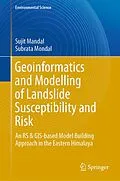This book discusses various statistical models and their implications for developing landslide susceptibility and risk zonation maps. It also presents a range of statistical techniques, i.e. bivariate and multivariate statistical models and machine learning models, as well as multi-criteria evaluation, pseudo-quantitative and probabilistic approaches. As such, it provides methods and techniques for RS & GIS-based models in spatial distribution for all those engaged in the preparation and development of projects, research, training courses and postgraduate studies. Further, the book offers a valuable resource for students using RS & GIS techniques in their studies.
Inhalt
Landslides: An Overview.- Geomorphic, Geo-tectonic and Hydrologic Attributes and Landslide Susceptibility.- Slope instability analysis: A Sub-Watershed Scale Study.- Geomorphic Diversity and Landslide Susceptibility: A Multi-Criteria Evaluation Approach.- Landslide Susceptibility Prediction and Assessment using Bivariate Models.- Multivariate Models and Prediction and Assessment of Landslide Susceptibility.- Application of Probabilistic Approach in Landslide Susceptibility Analysis.- Machine Learning Models in Landslides Susceptibility Assessment.- Factor and Factors' Cluster Analysis and Landslide Susceptibility Assessment.- Micro level Landslide Susceptibility and Risk Assessment.- Comparison between Susceptibility Models: A critical Review and Evaluation.
